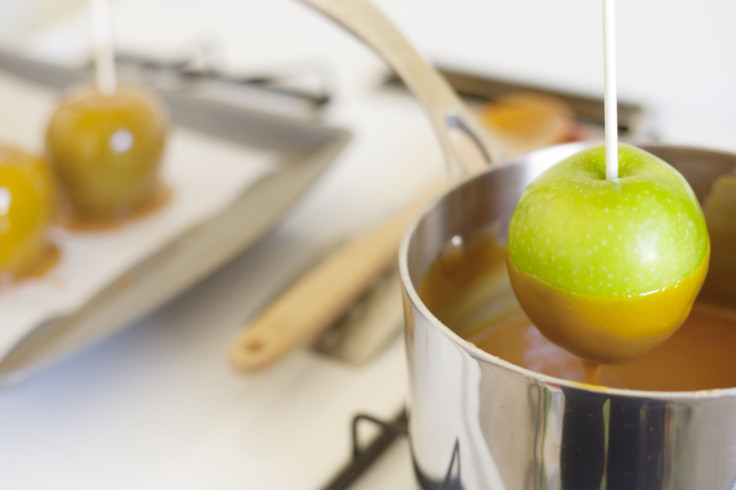Caramel Apple Recipe Can Lead To Listeria Bacteria Growth; Seasonal Treat May Sicken Consumers

Caramel apples are a classic fall favorite, served up in a variety of ways. But a new study, published in the American Society for Microbiology’s journal mBio, alerts consumers that if the apples are made incorrectly, sickening bacteria, Listeria monocytogenes, could grow just under the caramel-coated surface. Researchers from the University of Wisconsin-Madison’s Food Research Institute found the best way to avoid turning the seasonal treat into a breeding ground for bacteria.
After a listeria outbreak in late 2014, in which 35 people were infected and seven died, researchers began investigating the cause. The team interviewed 31 of the victims and found that before falling ill, 90 percent of the group ate commercially produced and prepackaged caramel apples. Three different manufacturers recalled their caramel apples as a preventive measure, but the damage was already done.
According to the Department of Health’s Food Safety division, listeria is a genus of bacteria typically found in soil, water, and some poultry and cattle. It’s unique in that it can grow and thrive in cold temperatures, like a refrigerator. When consumed, listeria bacteria cause fever, stiff neck, confusion, weakness, vomiting, diarrhea, and in the most recent outbreak, death. Sometimes symptoms may not appear until three to four weeks after eating the infected foods.
The study’s lead author and director of the institute, Kathleen Glass, explained listeria bacteria don’t normally grow on apples or on caramel, which is why it was such an unusual and difficult outbreak to track. But when a stick is inserted into the apple, it causes just enough juice to surface and get trapped under a layer of caramel. It creates an ideal environment for listeria to grow if already present on the apple’s surface. Moisture and room temperature accelerate that growth by up to 1,000 percent.
For the study, Glass and her colleague created a cocktail of four L. monocytogenes strains linked to the outbreak. Testing with granny smith apples, they swabbed different strains on the skin of the apples, but only inserted wooden sticks into half of the apples. All of the apples were then dipped into hot caramel using tongs or by holding them in the classic way, with sticks. They were then stored at either room temperature (77 degrees F) or refrigerated temperature ( 44.6 degrees F).
Just three days at room temperature was all the bacteria needed to grow 1,000 percent if the apples had sticks. Without sticks, listeria growth was delayed even when stored at room temperature. Listeria growth significantly decreased on apples with sticks stored in the refrigerator for up to a week. Stickless apples stored in the fridge had no listeria growth over the course of four weeks.
The hot caramel kills a lot of the bacteria off of the surface; however, “those that still survived were the ones that were able to grow,” Glass said. “If someone ate those apples fresh, they probably would not get sick. But because caramel-dipped apples are typically set out at room temperature for multiple days, maybe up to two weeks, it is enough time for the bacteria to grow.”
Glass recommends purchasing only apples that have been refrigerated or eating them fresh in order to drastically decrease the risk of ingesting listeria.
Source: Glass K. mBio. 2015.
Published by Medicaldaily.com



























